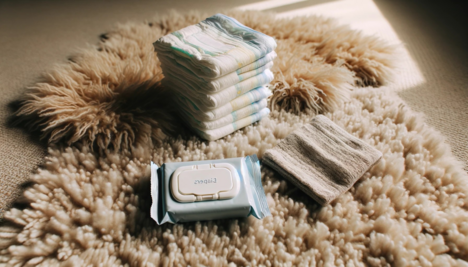Polyacrylic acid

In an era where materials science offers advanced solutions to everyday problems, polyacrylic acid (PAA) has found its place in a wide range of applications, from hygiene products to water treatment systems. But while the benefits of polyacrylic acid in human applications are well documented, its use in the context of dogs raises questions. What exactly is polyacrylic acid, and what potential benefits and drawbacks does it offer when it comes to our four-legged friends? This article dives deep into the topic to provide a comprehensive understanding.
What is polyacrylic acid?
Polyacrylic acid is a synthetic polymer known for its ability to absorb and bind large amounts of water. This property makes it particularly useful in products such as diapers, wet wipes and even in some industrial processes where moisture control is critical. On a molecular level, PAA works by binding water molecules into its structure, resulting in a gel-like substance that effectively traps the water.
Polyacrylic acid and dogs: applications and concerns
Benefits of polyacrylic acid in dog-related products
- Moisture control in dog beds: For dogs suffering from incontinence or for puppies that are not yet housebroken, beds or pads with polyacrylic acid can help absorb moisture and increase comfort.
- Hygiene products: Used in dog diapers or wipes, PAA provides an effective solution for moisture absorption, which can be especially useful when traveling or for older dogs.
Disadvantages and risks
- Potential health risks: The main concern with using polyacrylic acid around dogs is the potential toxicity. If a dog accidentally eats a product containing PAA, it can cause digestive upset, constipation or worse health problems.
- Environmental concerns: As a synthetic polymer, polyacrylic acid is not biodegradable. Products containing PAA therefore contribute to environmental pollution, especially if they are not disposed of properly.
Safety measures and recommendations
The use of products containing polyacrylic acid requires special attention and precautions:
- Safe storage: ensure that all products containing PAA are stored out of reach of dogs to avoid accidental ingestion.
- Consideralternative products: Where possible, consider using natural or biodegradable products to minimize both potential health risks to your dog and environmental impact.
- Consult with a veterinarian: In the event that your dog comes into contact with a product containing polyacrylic acid or shows signs of illness, seek veterinary advice immediately.
A balancing act
While polyacrylic acid may have practical applications in some dog products, particularly in terms of moisture control, the potential risks and environmental impacts must be carefully weighed against the benefits. The health and safety of our best friend and the protection of our planet should always be our top priority. By making informed choices and choosing safe and sustainable alternatives where possible, we can ensure the well-being of our dogs while reducing our environmental footprint.
If you notice any signs of hypersensitivity or poisoning in your dog, you should see your vet immediately. We are not a substitute for a vet, but we try to be as accurate as possible. Every dog reacts differently and we recommend you get a second opinion or consult your vet if in doubt.
Stay healthy and take good care of your four-legged friend!😊